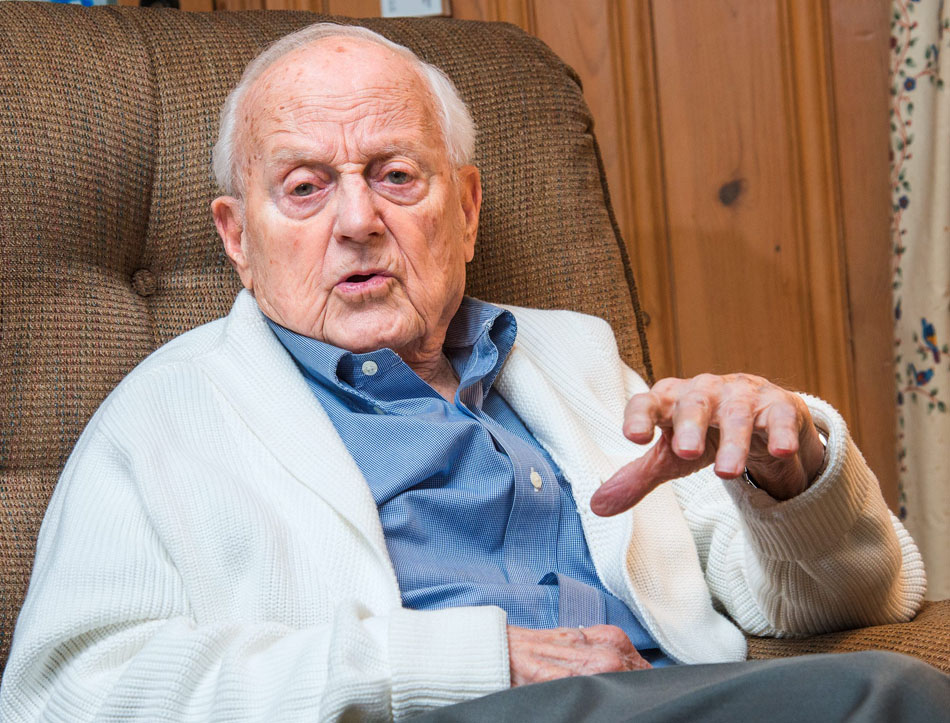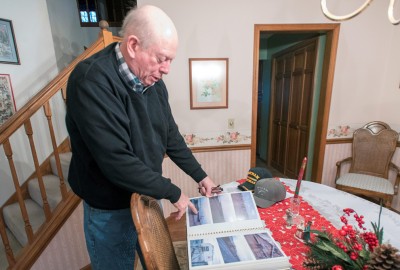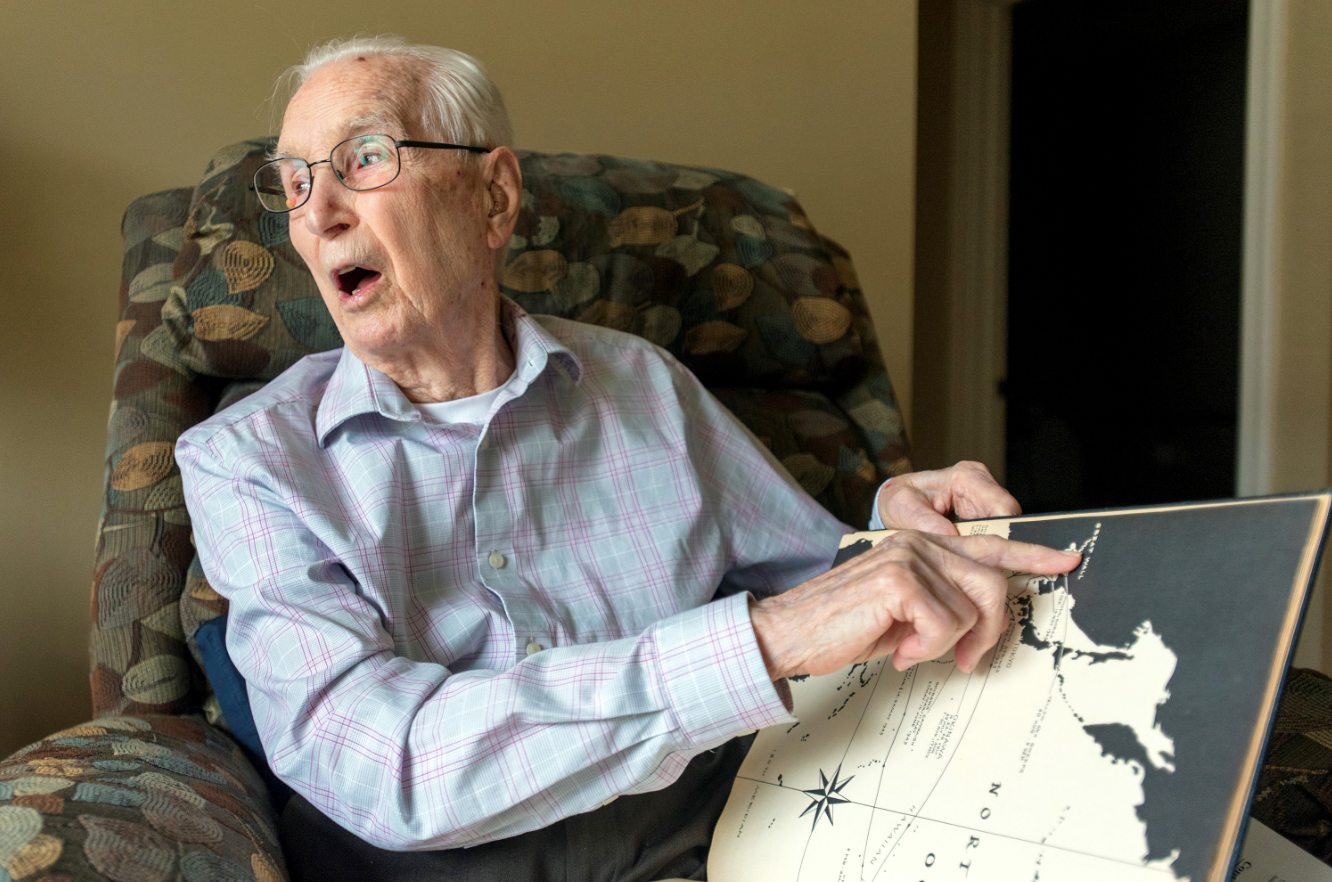Morris Hecker
By Paul Wood

Photo By Robin Scholz/The News-Gazette
CHAMPAIGN — Morris Hecker was bombed and strafed on his LST — an acronym that he jokes stands for “Long, Slow Target.”
Landing Ship Tanks were boats that delivered men and materiel in beach landings under fire, and Hecker saw more than his share of them.
Now 93, he was a University of Illinois student when Japan attacked Pearl Harbor. Like many of his friends, he enlisted, in his case in the Navy.
Hecker, who’d grown up on University Avenue before Champaign Central was built across the street, was seen off by friends in Champaign for his first training, in St. Louis.
He later trained on the Northwestern campus and was schooled in Pennsylvania before being sent to New Orleans to wait for his LST.
At first, he’d wanted to serve on a submarine, but he was later disabused of the notion, he says.
Not that the LST was the ultimate in ocean travel. Long and narrow, it was intentionally built shallow for landings.
The ship took a short cruise to Cuba, where he saw friends. After a slow trip through the Panama Canal, the LST suffered at the hands of the oft-misnamed Pacific Ocean.
“It was a flat boat, and we tended to bob like a cork in storms,” he says. “You could go over the low railings. The deck was wet and slippery.”
Hecker mastered semaphore, Morse code and some navigation, but “the real learning was on the job.”
Hecker said he was naive and assumed nothing bad could happen to him until he actually came under fire, as the LST-552 was assigned to a landing fleet.
After Hawaii, the ship traveled to Ulithi, an atoll in the Caroline Islands, where Hecker recalls there was no resistance. It later became a huge naval base.
From there, the LST went to Peleliu Island, then Leyte in the Philippines, where it was bombed by a Japanese plane in the fall of 1944.
“We lost some good men when we were bombed,” he recalls. He said he regrets not praying with a quartermaster buddy, who later died of his wounds.
That was the only time men on board died, Hecker says, but he would never know what happened to many of those who ran onto the beaches.
Once, he was in a boat that was strafed, and two sailors jumped into the water. He turned the boat around and rescued them.
There was fighting at Okinawa in several landings. That’s where LST-552 was when it got its assignment to attack Honshu, the main island in Japan.
He believes Japanese resistance would have cost many lives, but the war ended before that invasion.
“I’m so thankful for the atom bombs,” he says.
After the war, the LST was decommissioned in Florida and later scrapped.
Hecker did better. He crammed to finish his UI studies, then went to Harvard Business School.
He retuned to Champaign and joined with a cousin in Stipes Publishing, a business that still makes textbooks.
He met Martha Zearing, who was in graduate school in education at the UI. She became a teacher, and they married.
She has passed away, but two children, John and Mary, survive.
Do you know a veteran who could share a story about military service? Contact staff writer Paul Wood at pwood@news-gazette.com.
Read more stories from local veterans:
 Thomas Behrensmeyer
CHAMPAIGN — Thomas Behrensmeyer served in Vietnam, where you’d think working in the PX — the base store — would exempt y …
Thomas Behrensmeyer
CHAMPAIGN — Thomas Behrensmeyer served in Vietnam, where you’d think working in the PX — the base store — would exempt y …
 Mark Williams
CHAMPAIGN — There’s a blessing/curse: “May you live in interesting times.” Mark Williams lived through one. While the wa …
Mark Williams
CHAMPAIGN — There’s a blessing/curse: “May you live in interesting times.” Mark Williams lived through one. While the wa …
 Thomas Labney
SAVOY — From freezing in Alaska to boiling just above the engine room in the humid South Pacific, Thomas Labney shipped …
Thomas Labney
SAVOY — From freezing in Alaska to boiling just above the engine room in the humid South Pacific, Thomas Labney shipped …